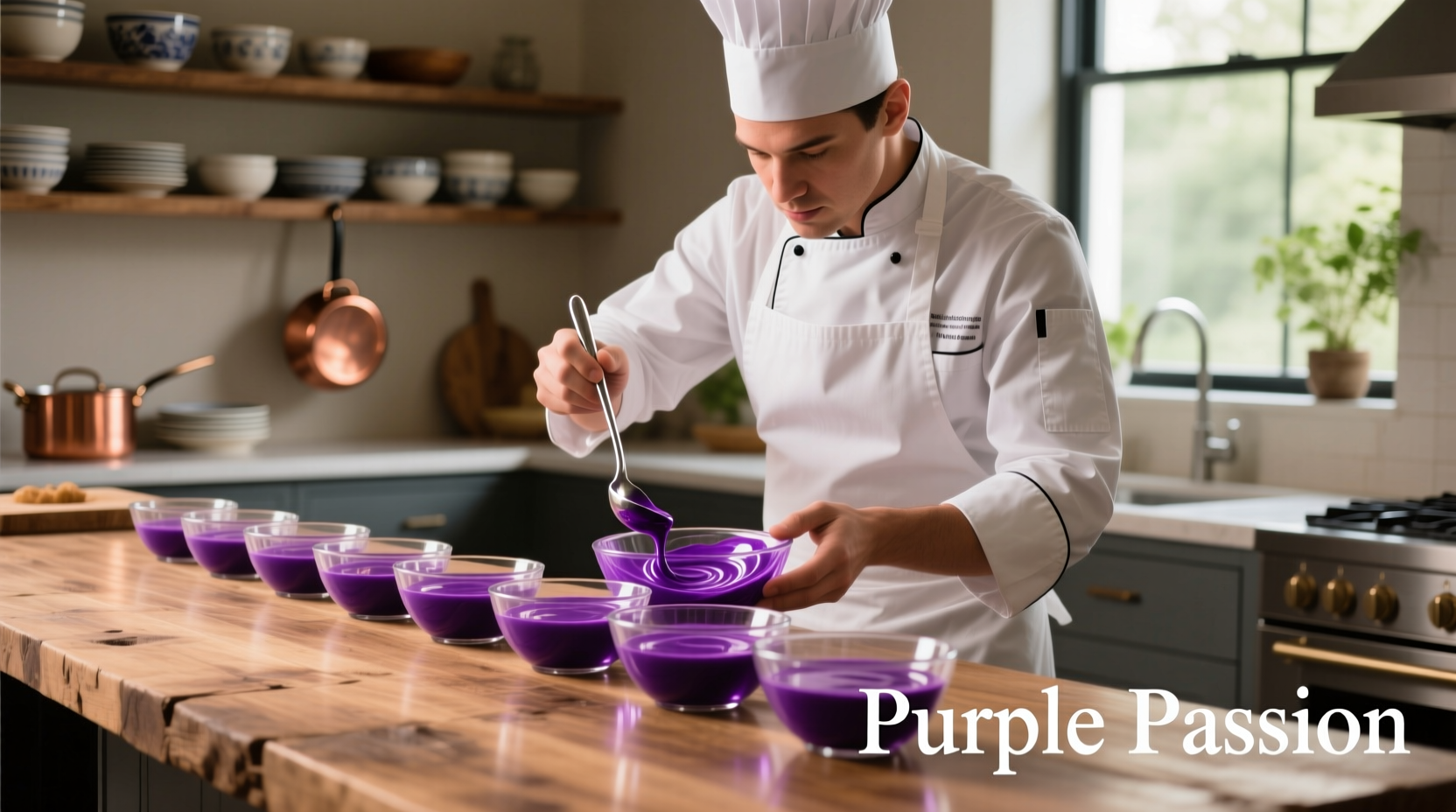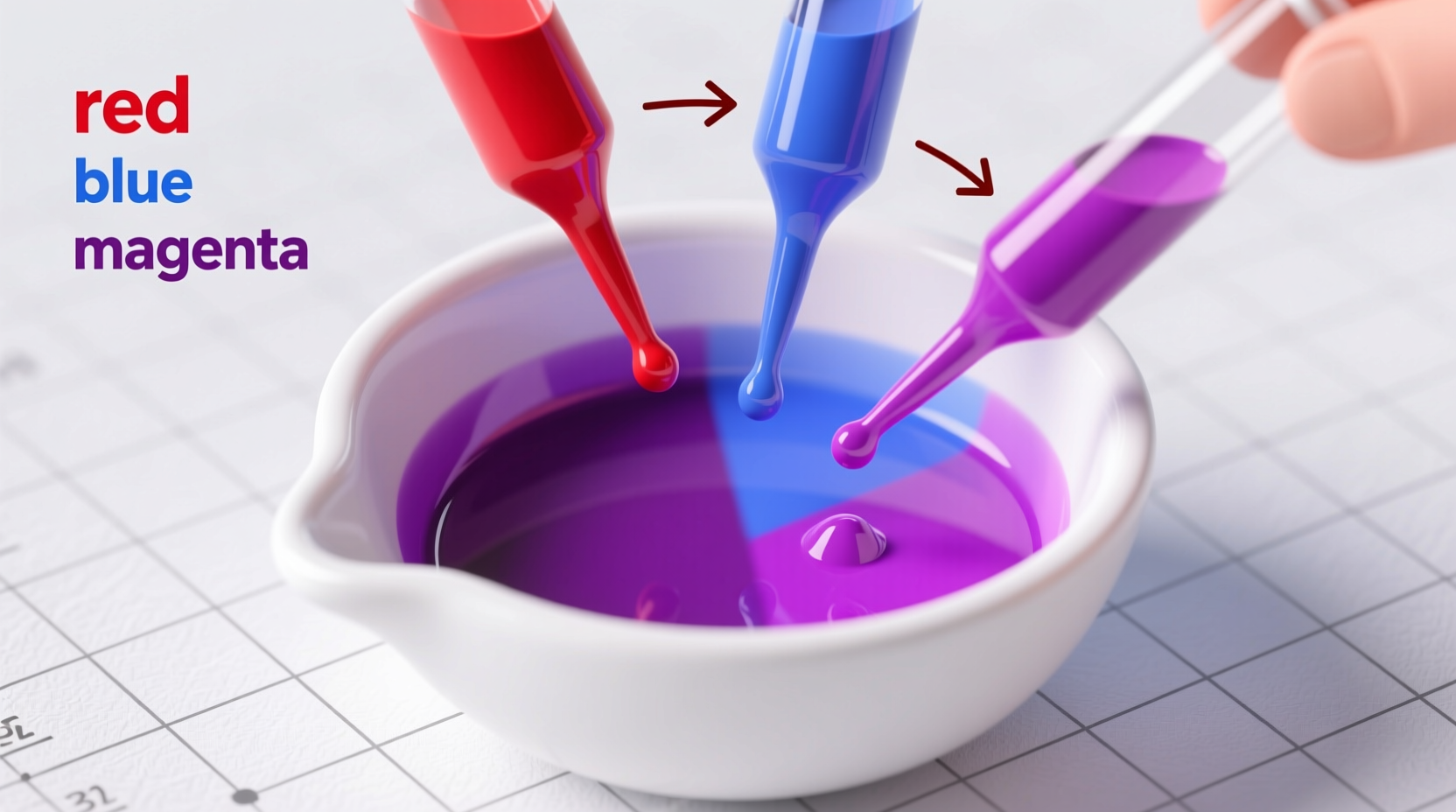Creating the perfect purple hue for your baking or cooking projects doesn't require specialty food coloring. Whether you're decorating birthday cakes, preparing holiday treats, or crafting edible art, understanding color mixing fundamentals ensures professional results every time. This guide reveals precise methods for achieving vibrant purples using basic ingredients you likely already have in your kitchen.
The Science Behind Perfect Purple Food Coloring
Purple sits between red and blue on the color spectrum, making it a secondary color created by combining these two primaries. When working with food coloring, the base ingredient significantly impacts your final shade. White bases like frosting or cake batter require less coloring than yellow-tinted bases like vanilla cake. Always start with small amounts—you can add more, but you can't remove excess coloring once incorporated.
| Method | Best For | Color Stability | Preparation Time |
|---|---|---|---|
| Red + Blue Food Coloring | Frosting, cake batter, royal icing | Excellent (won't fade) | 1 minute |
| Beet + Spirulina | Health-conscious recipes, paleo diets | Moderate (may darken) | 10 minutes |
| Purple Sweet Potato | Muffins, breads, cookies | Good (stable when cooked) | 20 minutes |
| Red Cabbage (pH adjusted) | Clear beverages, gelatin | Poor (changes with pH) | 30 minutes |
Professional Method: Standard Food Coloring Technique
For consistent, vibrant results with commercial food coloring:
- Start with a clean white base (whipped cream, buttercream, or plain cake batter)
- Combine 5 drops of blue and 5 drops of red liquid coloring in a small bowl
- Mix thoroughly before adding to your recipe
- Gradually incorporate into your base, mixing well after each addition
- Adjust ratio: add more red for magenta, more blue for violet
For pastel lavender, use 2 drops blue + 3 drops red per cup of base. Deep plum requires 8 drops blue + 10 drops red. Remember that colors deepen over time—wait 15 minutes before final assessment. The FDA confirms that standard food dyes are safe when used in recommended amounts for culinary applications.

Natural Purple Alternatives for Health-Conscious Baking
When avoiding artificial colors, these natural methods deliver beautiful results with proper technique:
Beet and Blue Spirulina Method
Blend 2 tablespoons fresh beet juice with 1/4 teaspoon blue spirulina powder. This combination creates a stable violet hue that works well in frostings and cake batters. The National Center for Biotechnology Information notes that beet pigments maintain color stability in neutral pH environments, making them ideal for most baking applications.
Purple Sweet Potato Technique
Steam and puree 1/2 cup purple sweet potato until smooth. Strain through cheesecloth to remove fibers. Use 2 tablespoons puree per cup of batter. This method provides excellent color retention during baking, as documented in Food Chemistry research. The resulting purple deepens when heated, perfect for cookies and muffins.
Special Application Tips for Different Mediums
Professional bakers know that different mediums require tailored approaches:
- Buttercream Frosting: Use gel coloring for intense purple without thinning consistency. Add coloring to already whipped frosting for even distribution
- Chocolate Recipes: Double your standard amounts—chocolate's brown base absorbs purple quickly. White chocolate requires less coloring than dark
- Clear Liquids: For beverages, use red cabbage extract with lemon juice (acidic environment creates bright purple). Avoid standard food coloring which may separate
- White Chocolate: Melt chocolate first, then add coloring gradually. Overmixing causes seizing—stir gently until uniform
Avoiding Common Purple Coloring Mistakes
Even experienced bakers encounter these pitfalls:
- Brownish Results: Caused by unequal ratios—too much red creates brown. Start with equal parts and adjust incrementally
- Fading Colors: Natural purples may fade over time. Store naturally colored items in airtight containers away from light
- Uneven Distribution: Always mix coloring in a small portion first, then blend into main batch
- Overpowering Flavors: Some natural colorants (like beets) add subtle flavor. Balance with complementary extracts like vanilla or almond
Temperature significantly affects color development—cool environments slow color settling while warm conditions accelerate it. When working with royal icing, allow 24 hours for colors to fully develop before final assessment. The University of Illinois Extension recommends testing colors on a small batch first, especially when using natural alternatives that interact differently with various ingredients.











 浙公网安备
33010002000092号
浙公网安备
33010002000092号 浙B2-20120091-4
浙B2-20120091-4